SCAFFOLD ASSEMBLIES WINTER 2024
KELSEY KLINGER
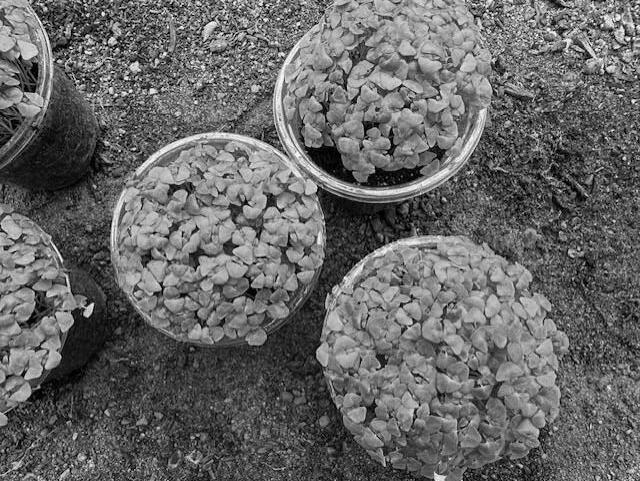


SCAFFOLD ASSEMBLIES WINTER 2024
KELSEY KLINGER


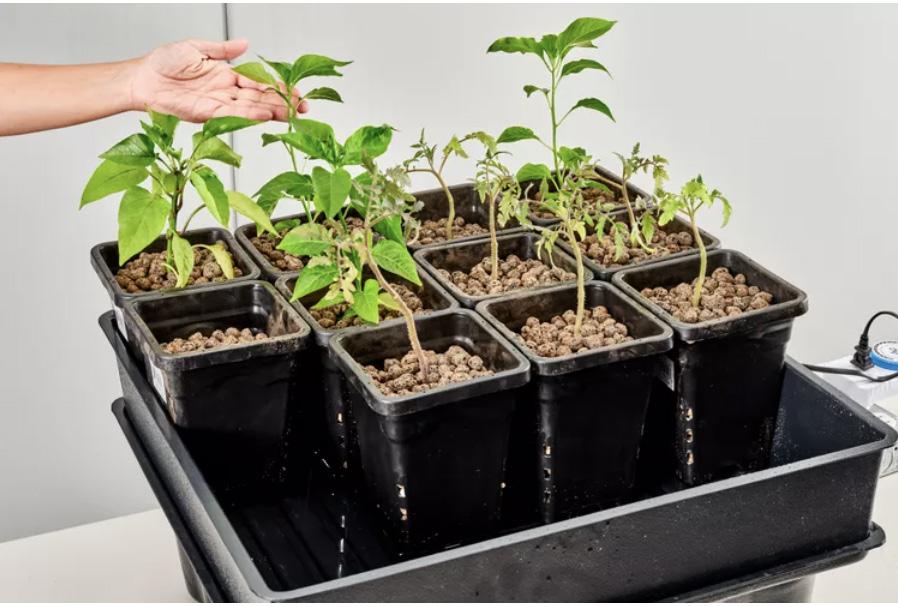

Ebb and Flow watering systems have historically been used in home gardens, utilizing a horizontal tray structure.
Horizontal plant trays are filled with plants in perforated plant pots. Water floods the tray via submersible pump, and remains until a predetermined timer turns off. When the water floodsd the tray, it is absorbed
through the perforated pot holes by the roots, hydrating the plants with water and essential nutrients When the timer is off, the water left in the tray drains out through a hose into the water reservoir using gravity, as the plant trays are resting on top of pitched planes.
There is little research in the connection of plant growth with
vertical ebb and flow systems, as they are traditionally a method only used in horizontal, homemade conditions.
Set up could be more difficult, but maintenance and exchanging species that require so little effort.
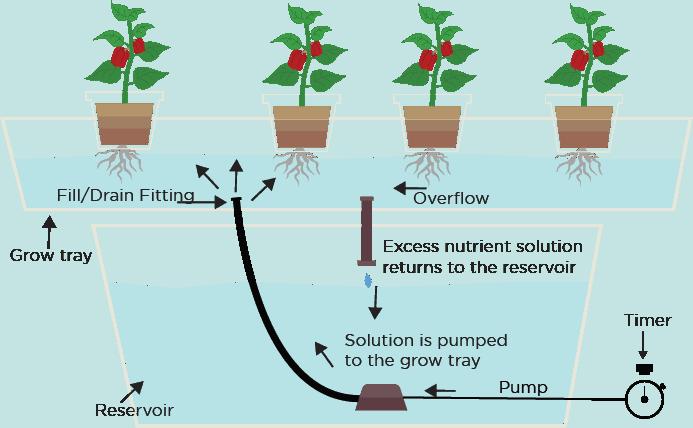
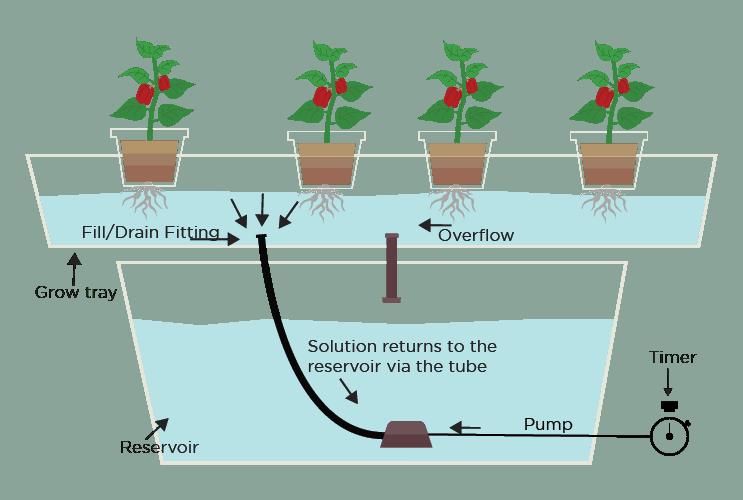
Ebb and flow is a hydroponic watering method that focuses on water and nutrient absorption through a plant’s roots.
Plants rest within a grow tray, where their roots are exposed to a flood tray below. A submersible pump pushes a water-nutrient solution
through a tube to fill the flood tray, and remains there to water the plants for a pre-designated amount of time. Time is determined by a multitude of factors, but prioritizes the plant species to drive the amount of time the roots are exposed to the water solution.
Typically an air tube or air pump offers a way of avoiding accidental flooding of the entire system with
too much water.
The ebb and flow method is usually used for herbs, salad greens, and plants that flourish in environments with an abundance of light and air. Some of the most notable species include lettuce, strawberries, and tomatoes.
At-home ebb and flow garden systems are becoming increasingly
popular, one reason due to the ability for typical garden plants thriving in the type of environment, especially at the smaller scale.
Ebb and flow systems are typically low cost, easy set up, and easy maintenance, though can be prone to system breakdown and unstable pH levels.
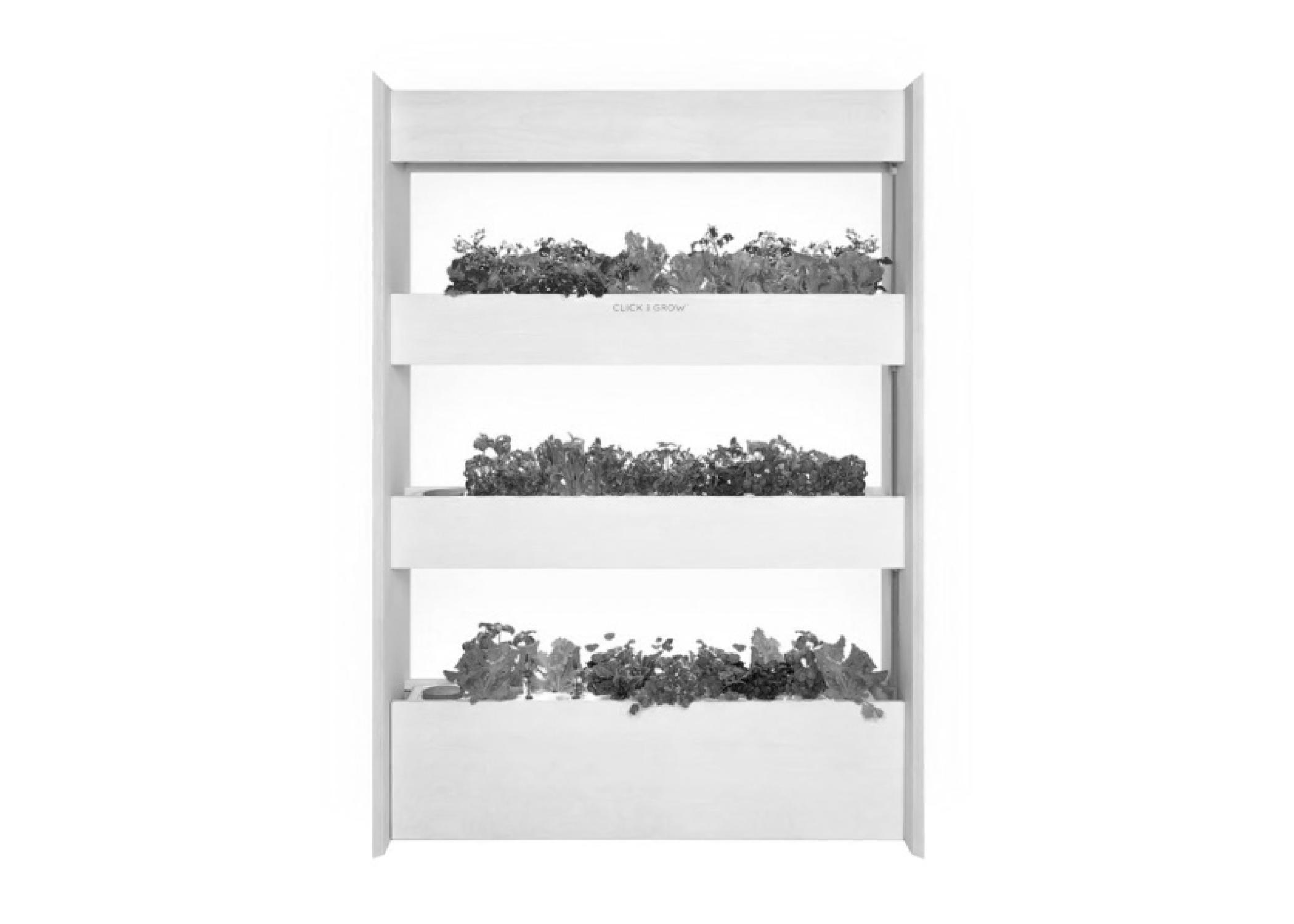

Click&Grow is an at-home indoor garden company that makes plant growing simple. At a variety of sizes, trays are planted with species and provides lighting and water on a timely schedule. Though the products do not utilize an ebb and flow watering system, the automatic water features imitate the methodology as close as anything else on the market. Seemingly, the
only way to produce an at-home ebb and flow garden system is to gather the parts and personally make it.
The lack of presence on the internet suggests that ebb and flow is a less popular watering option, despite its great compatibility with many popular garden crops.
Arduino is an Italian company that
produces microcontrollers, hardware, and software. For ebb and flow systems that require a frequent watering regimen, an Arduino would air in controlling the schedule.
Arduino boards are able to sense a basic input, such as a touch of a finger, and convert the signal into a desired output. For the testing at hand, it would be ideal for me to
utilize an Arduino board, but with the limited time available within a 10-week term, there would be the pressure of a severe time constraint to get the board correctly analyzing the preferred inputs and outputs.
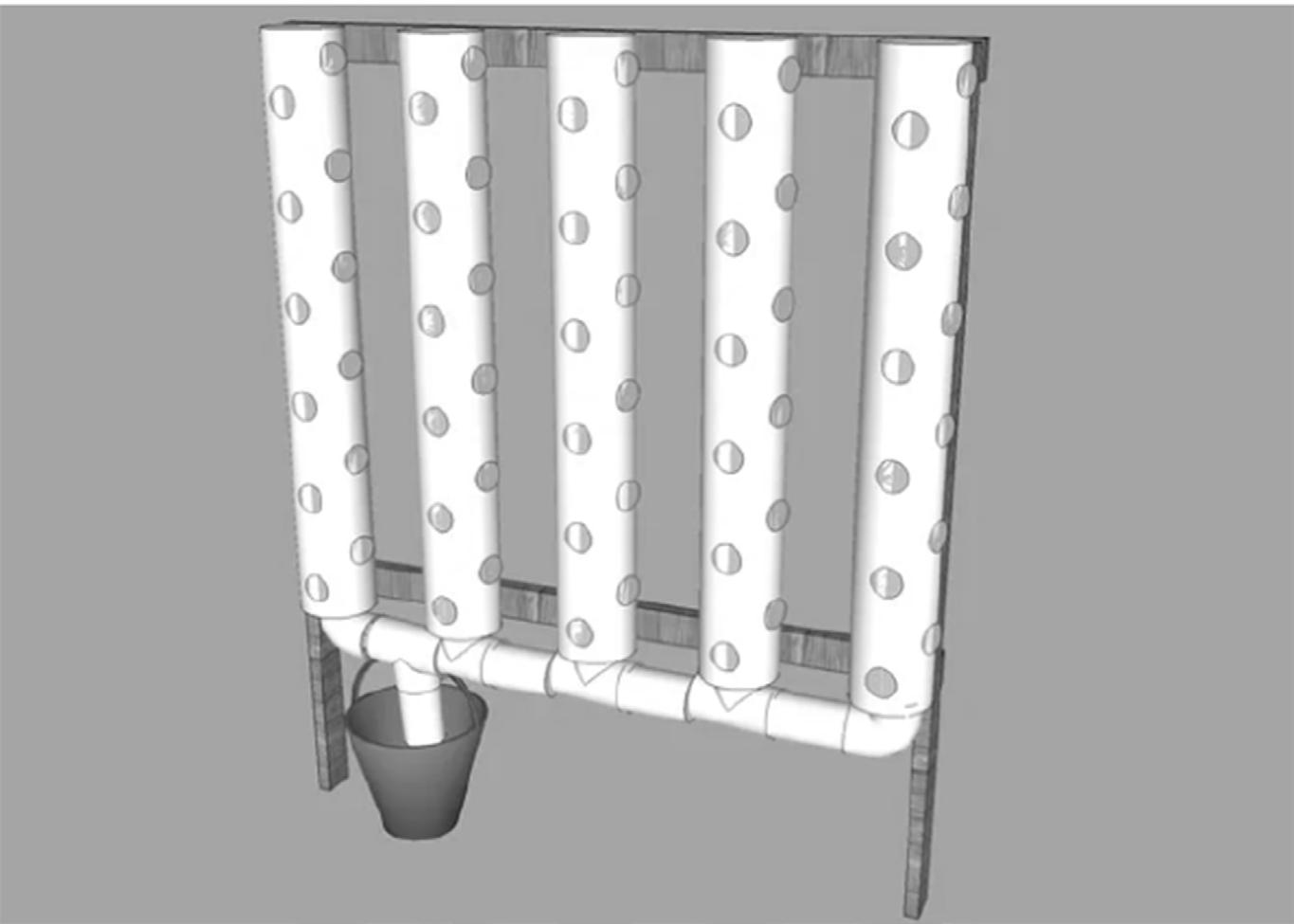
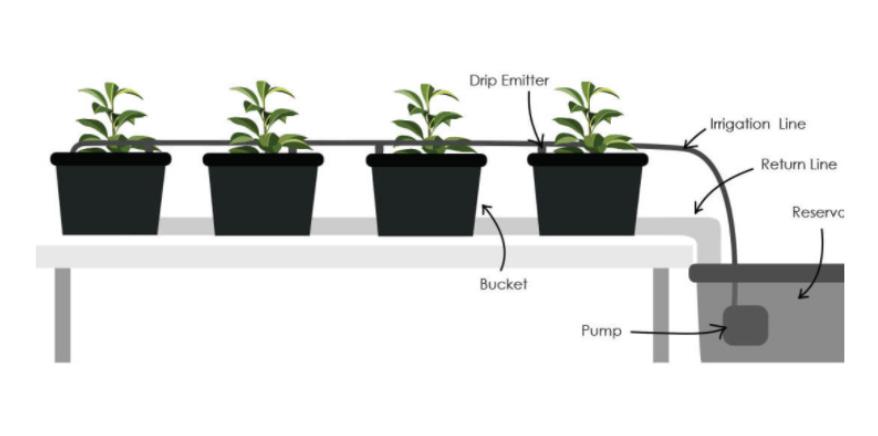
The University of Arkansas recently conducted testing to develop a system they call Shallow/Aero Ebb and Flow, which looks to utilize ebb and flow system principles to influence strong root growth among impacted crops.
Testing at the university controlled
variables such as light, drainage, water frequency, and nutrient levels to determine what produces the strongest plant root growth.
In efforts to take the system to a larger scale, students at the University of Arkansas sought out the ideal methodogy for growing for a local farm. The project included design elements outside of the ebb and flow growing system, though
research was limited to the success rate of the farm crops.
The factors the UArk students were working with are similar to my own testing, and include more logistical issues like access to proper materials, cost and eletrical availability and consumption.
Work at UArk demonstrates the ebb and flow process at a larger scale,
and directly compares grow rates of crops that were grown in various conditions. Strawberries have been found to grow successfully in vertical systems, though they developed at a faster rate with the ebb and flow system.
Topic Introduction
Topic Research
Research Presentation Prep
Research & Interest Presentation
Material & Supply
Construction
Germinate Testing Species
Design Documentation
Compile Research Results
Traditional ebb and flow systems are utilized in farming industries and select home garden systems.
I am interested in two areas within ebb and flow, one regarding moisture absorption, and the other connecting to the germination of the plants.
I will be testing plant moisture absorption through an angled flood
tray to determine if it has any bearing on the success rate of the plant. My testing can serve as a general answer to how much freeflowing water the roots prefer to have to encourage strong plant ad root growth. One plant will have much more flowing water than the other, and I will measure its success based on the visible growth of the plant.
Prior to the angled flood tray, I will be testing how chia seeds germinate using traditional methods versus hydroponics. I will plant seeds in the same clear planters, and one will absorb water from the top as traditionally practiced, and one will absorb its moisture via its roots through the bottom of the planter.
This will test whether or not the ebb and flow method of hydroponics is
effective through the entirety of a seed’s life or only after germination.
I am anticipating that my findings will result in further research in future Scaffolds courses, and ideally expanding the range of known species that can thrive in an open air environment like the ebb and flow methodology.
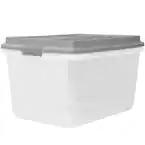
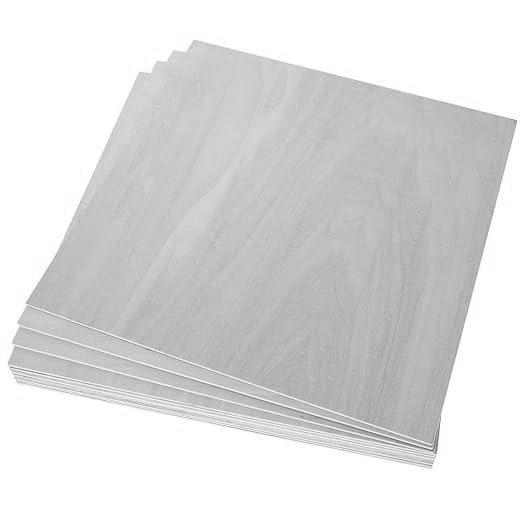

There are several materials that are needed to complete an ebb and flow system, outside of the things that will aid specifically in the testing at hand. A plastic storage bin that is
3_
4_
5_
6_
7_
8_
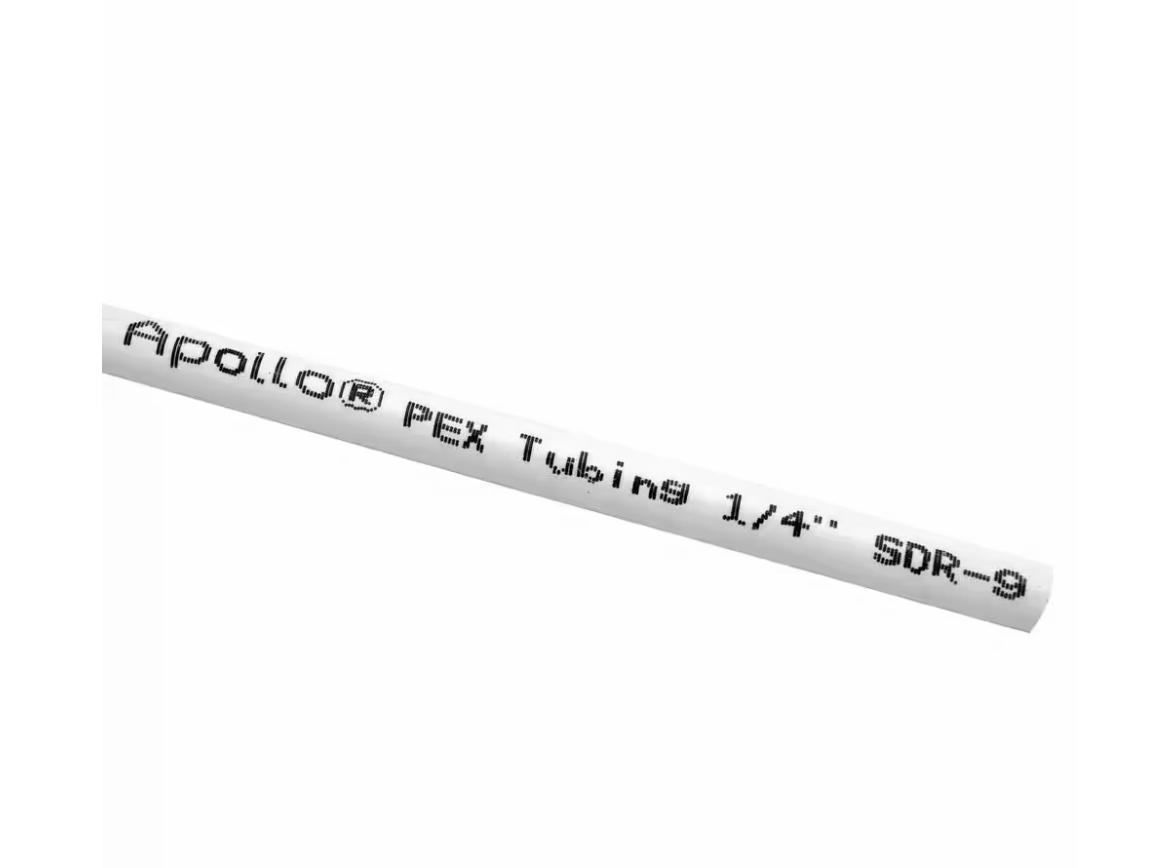
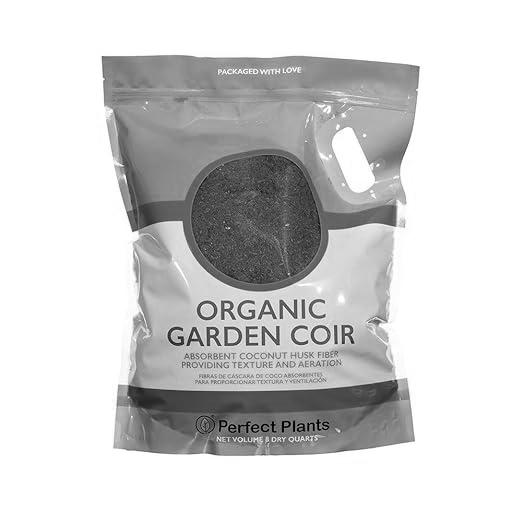
taller than wider allows for the reservoir to be kept below the flood tray to accommodate the entire system into one container. The majority of these items will be easier found online rather than in-person, and the testing should allow for shipping time as a part of the process of acquiring all of the materials.*
Of the materials listed, the outlet

timer and pex will be the easiest to find after the online orders have arrived. The phased shopping approach will help ensure that the items in the secondary and tertiary purchases are fitting correctly to the items previously acquired.
The chia seeds will need time to sprout prior to the testing, so it is essential that they begin growing to allow for maximum testing time.
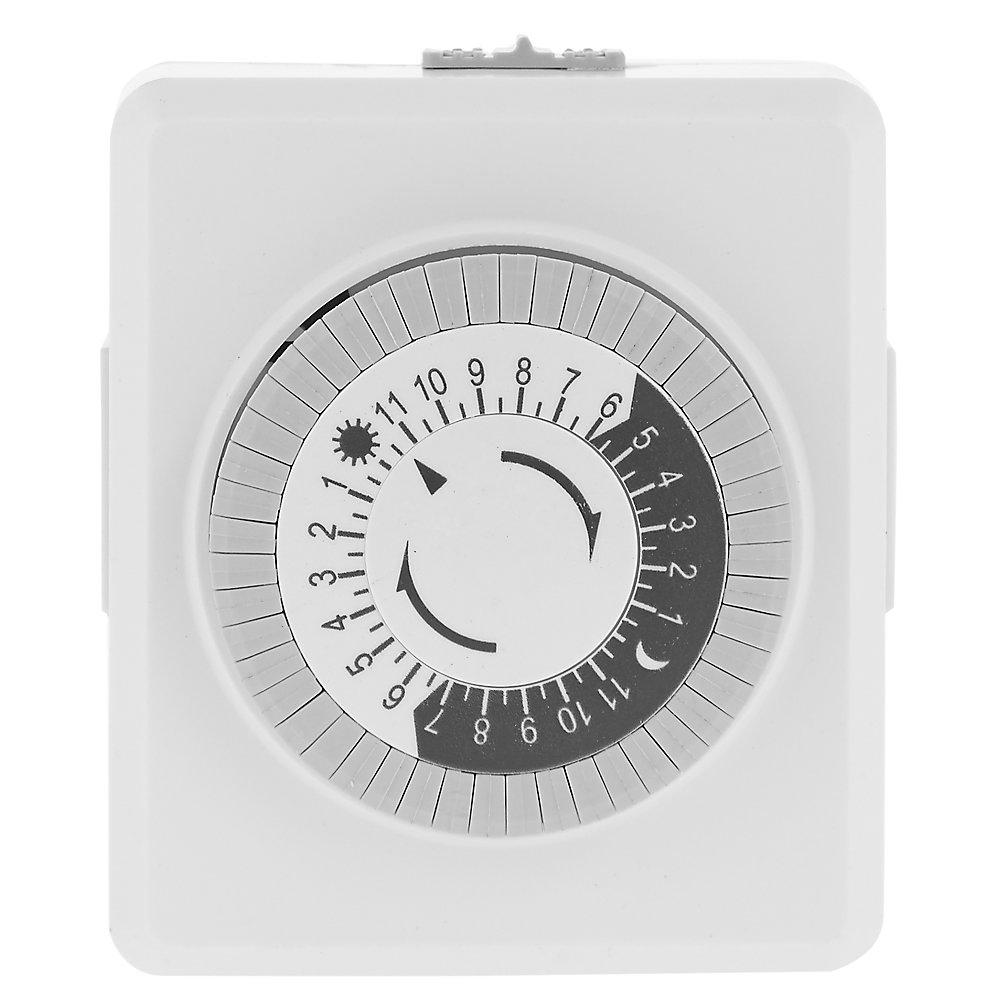
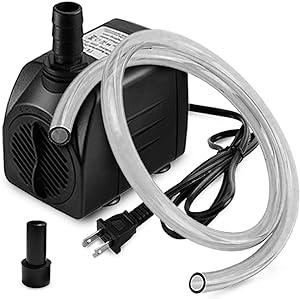
Online materials also depended on ability to share with the other researchers in the class, which also impacts the shipping efficiency.
*Additional materials were acquired later on in the process, where garage sealant was utilized to seal the edges of the basswood to form watertight barriers between levels within the plastic storage bin.
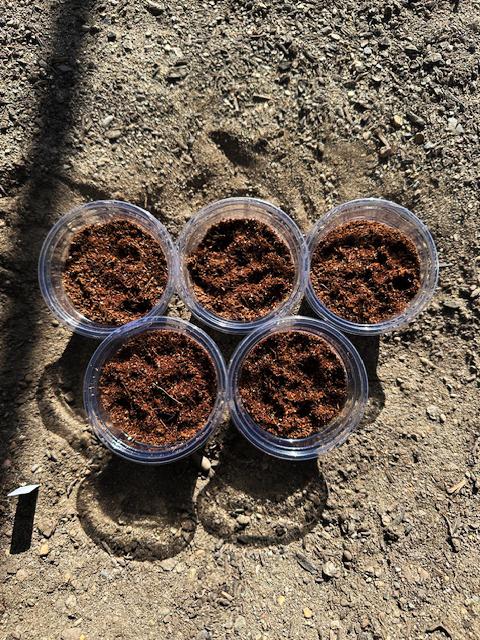
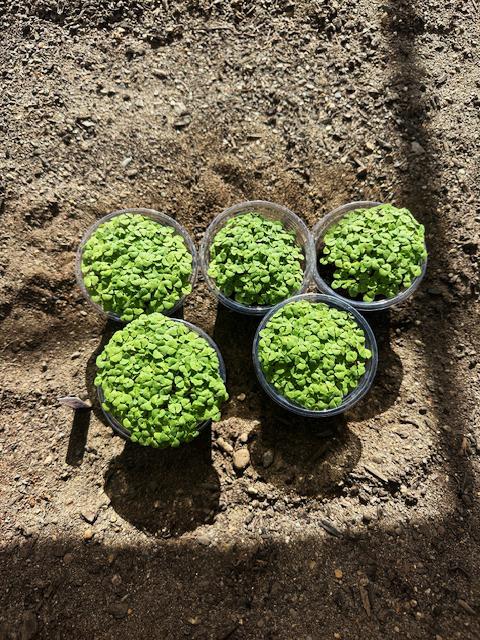
It was a priority to get the chia seeds planted prior to assembly of the ebb & flow system, as I wanted the testing to demonstrate the ability of the system to continue to foster growth, rather than start it in the first place. Chia seeds started much simpler than I anticipated, and quickly developed roots long enough to absorb water through
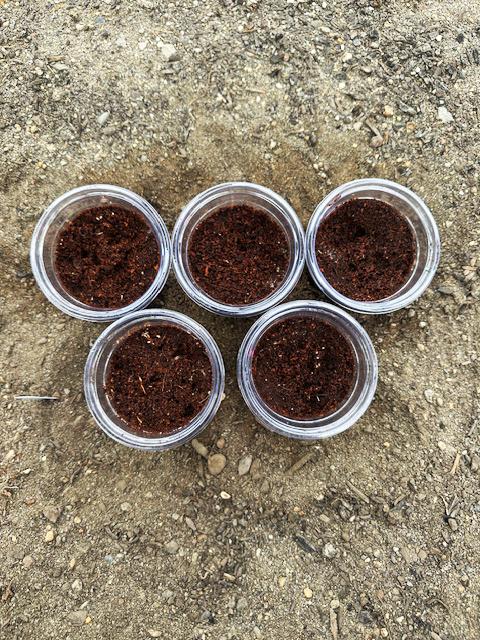

hydroponics. I determined that I could have begun the traditional growing process of the chia seeds much later, but I was ultimately glad I had plants to work with later on in the process.
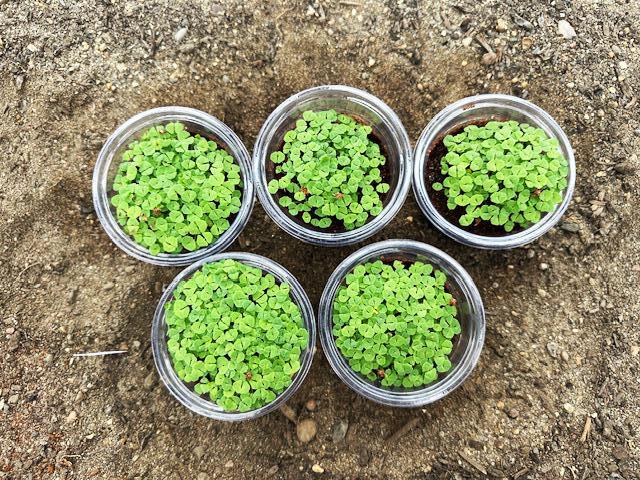

I was surprised by the length of roots the seeds quickly grew, where they began to grow out of the pot.
I had not anticipated a small plant such as chia to create such large roots.
The pace of the chia seed growth inspired me to see if hydroponics would inspire germination as quickly, and was what influenced another round of chia seeds to grow through strictly hydroponics.
1_ February 13th
2_February 15th
3_ February 20th
4_ February 22nd
5_ February 27th
6_ March 5th
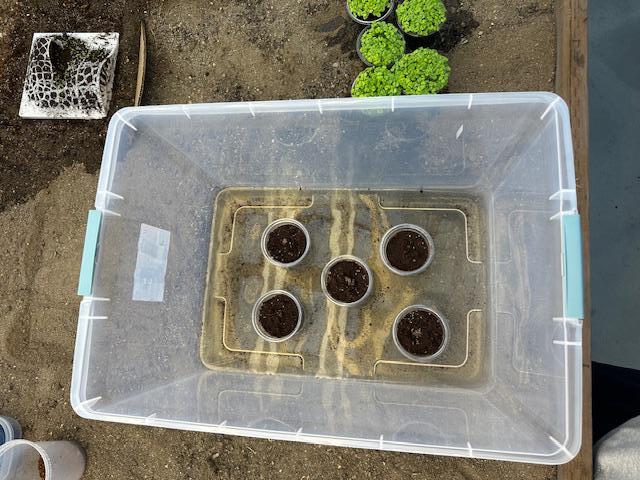
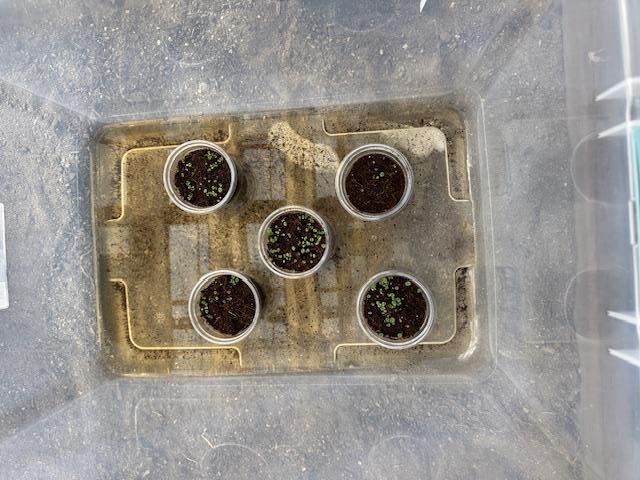
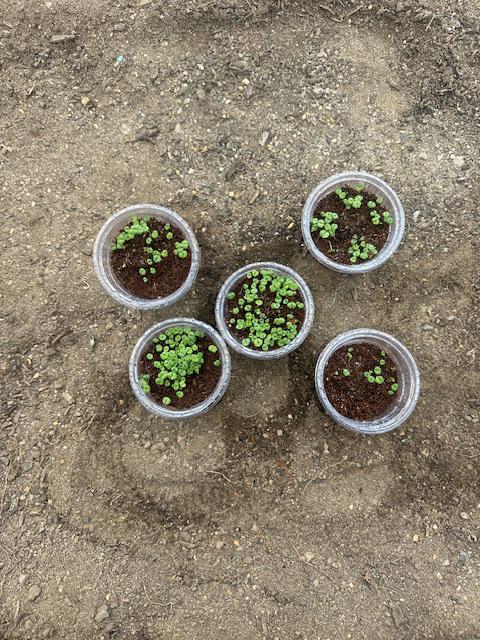
Hydroponics Supporting Germination
Based on the speed of which the chia germinated, I tested how the seeds would start if they were in a hydroponic situation prior to their intital growth. I was hesitant that it would work, as hydroponics rely on established roots to absorb water and nutrients from the bottom of the planter, so I saturated the soil
normally to give the seeds a headstart.
The hydroponic starts were planted a few weeks later than the others, but I was still anticipating faster results than what has been observed thus far. The seeds are more sparse and less developed, and I am curious to see how they grow under the ebb and flow conditions.
I am curious if the water cannot be reached by the roots until they are longer, but it is seemingly taking more time for the roots to grow than the original test group of chia.
In the ebb and flow system, two regular-germinated chia pots and two hydroponically-germinated pots will be tested. When the two groups are in the same watering environment, the results will be
clearer as to if ebb and flow hydroponic techniques are suitable for chia plants.
perforated planters with chia starts
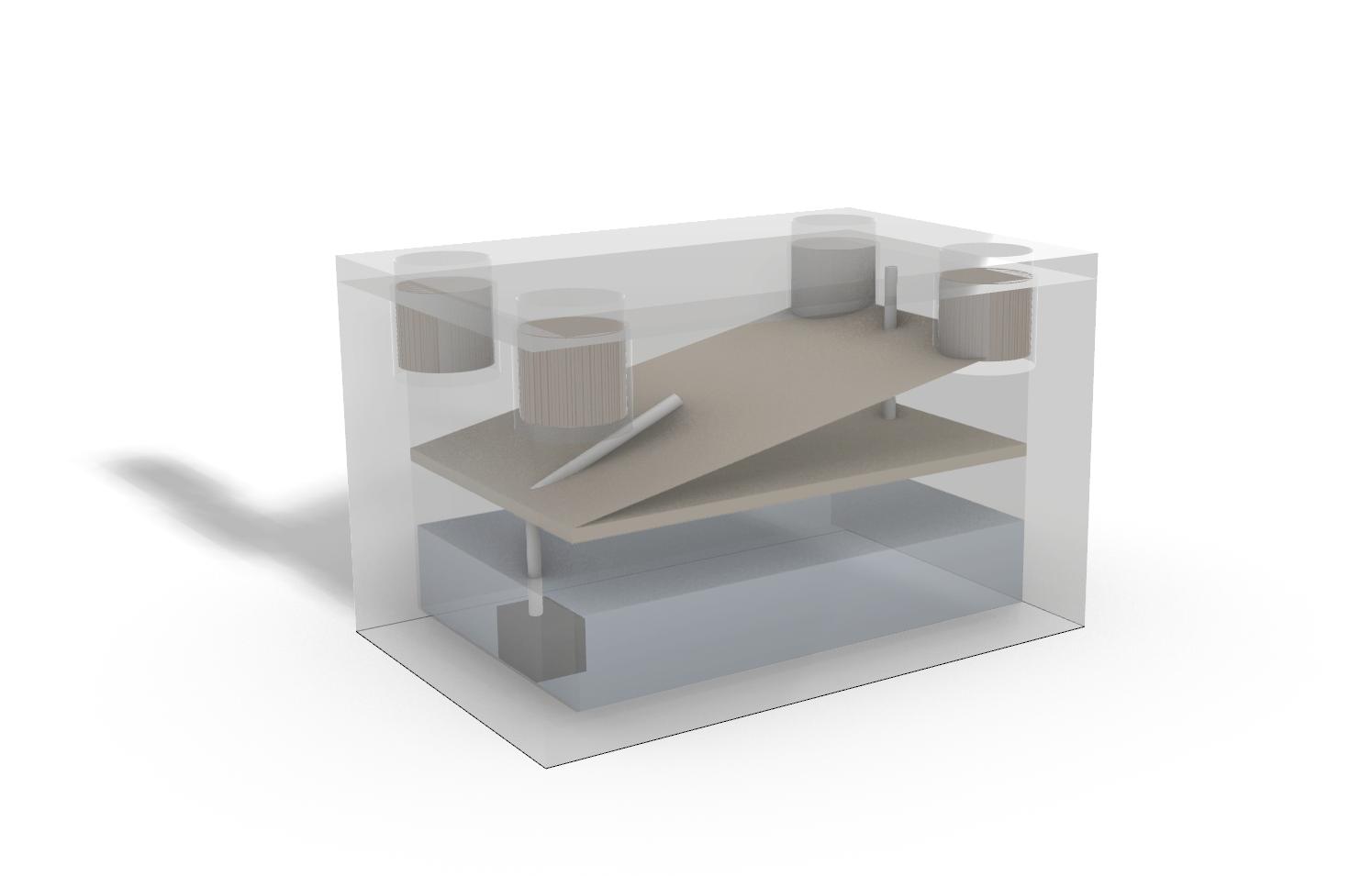
submersible pump with hose
detachable lid
air tube
angled flood tray
water reservoir
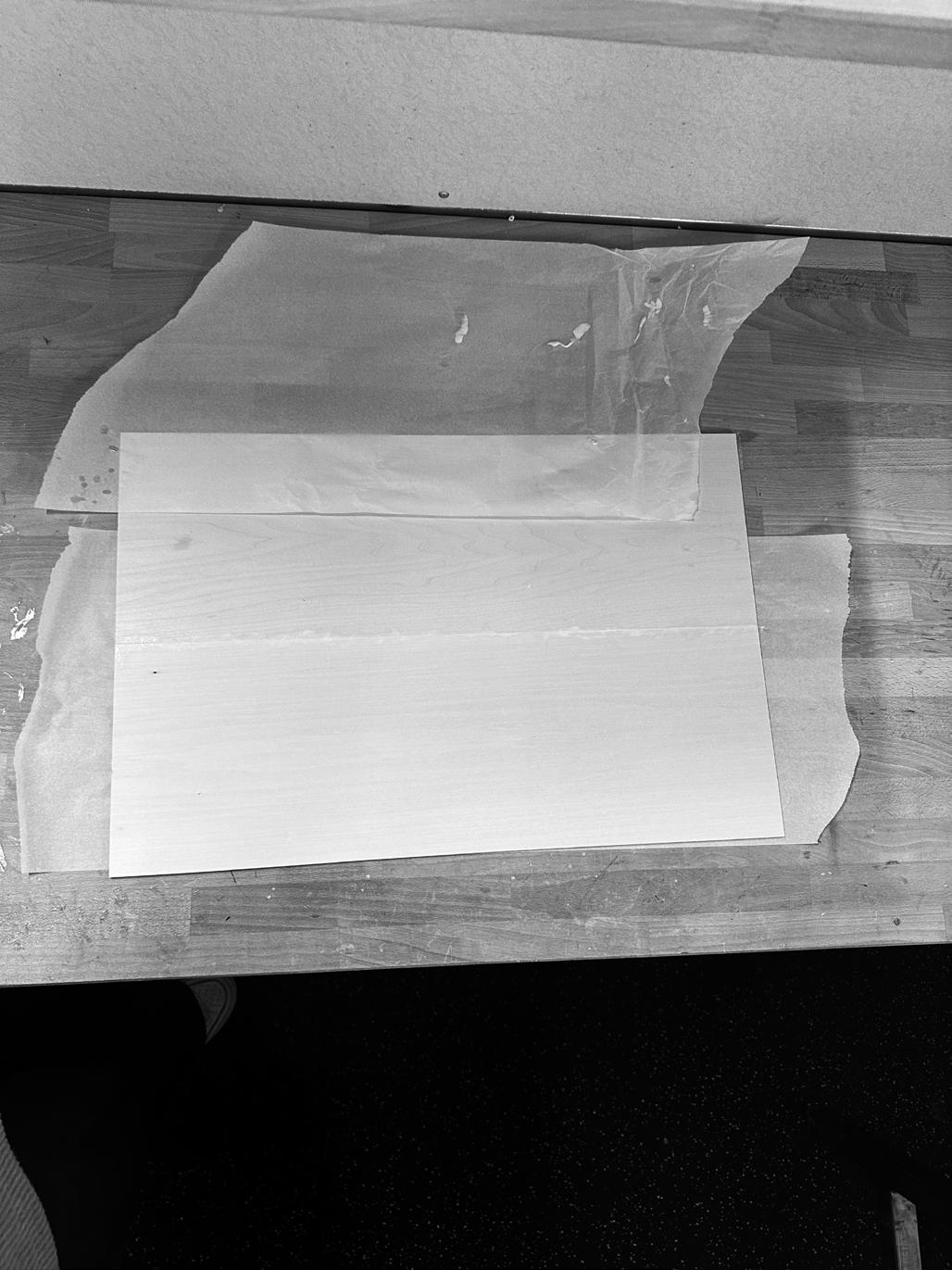
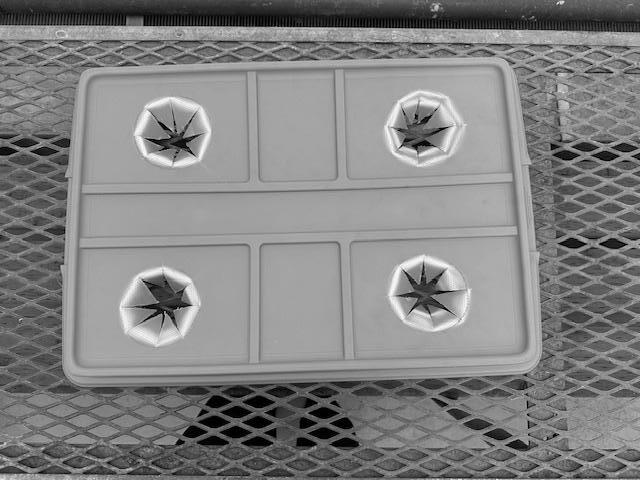

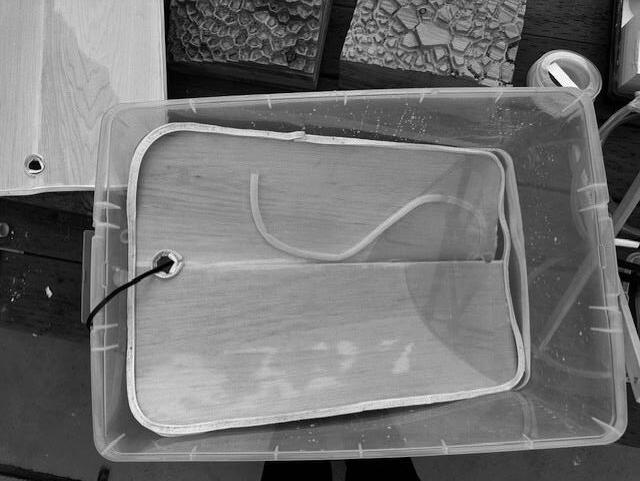
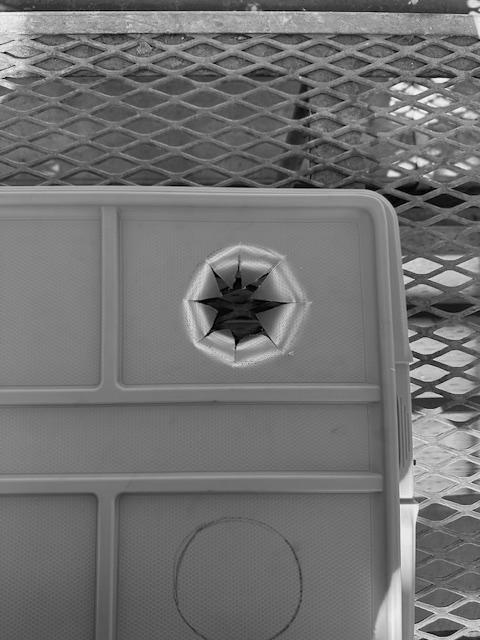
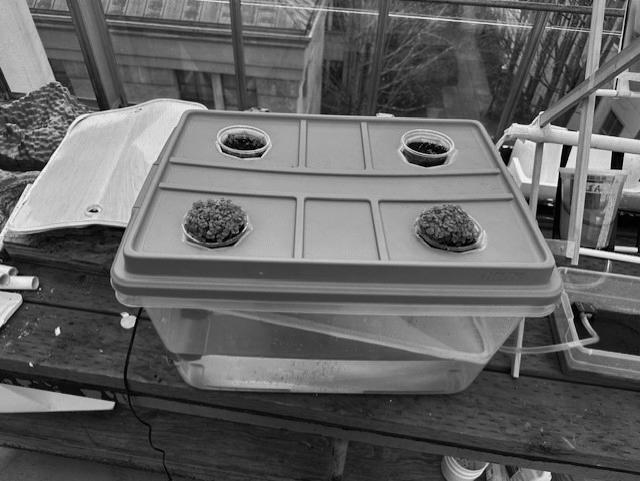


In the images above, chia plants on the left of each image were introduced to hydroponic ebb and flow prior to germination. The plant to the right of each image are chia plants that were introduced to the ebb and flow method after the seeds sprouted.
Both planters were exposed to the
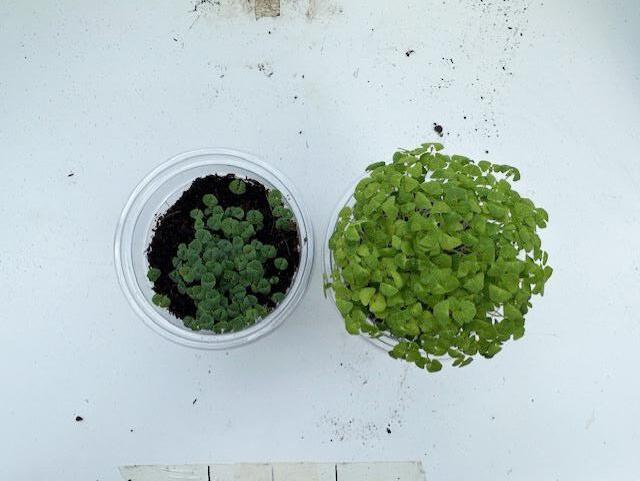
ebb and flow methodology at the point the photos were taken. The plant on the right that germinated using traditional top-down watering was able to develop longer and stronger roots, which likely allowed for hydroponic water consumption to be easier for the plant. The leaves are brighter, fuller, and roots are much denser.
The planter that houses the
hydroponic-first chia, on the left, is much weaker in terms of both leaf size and density, and root length and density.
My findings with these two growing methodologies clearly suggest that pre-germinated seeds will succeed in an ebb and flow hydroponic scenario.
The results were not shocking, as
established roots would absorb more water than roots that aren’t able to extend down to the source.
Noticing that the roots of the traditionally-grown chia are beginning to grow rootbound bottom of the planter, it would be an interesting additional test to play with the height of the planters in relation to the water absorption through the roots.
Throughout the research process, I was reminded of several aspects in my past educational career that make research and testing so intriguing, one being the freedom to test something that is personal and exciting to me. I found it rewarding to have found a topic within the scope of water that I was immediately interested in. It was exciting to reach back into my past of research, as I have not done much since entering the UO architecture program.
Where I was excited about the research however, came almost too many ideas, and my vision for the research became broad and overwhelming. Planning, building, and working with a research topic is very difficult to do within a 10-week term, especially when the direction I am wanting to take is unclear.
Pairing my research topic fuzziness with delays in material deliveries, the ability to construct and test my ideas became increasingly difficult. Many of the materials I needed were out of the given budget, so I went out myself to acquire them. I didn’t have a problem in doing so, but the materials I was looking for were generally hard to find and difficult to match sizing to the materials coming
from online, like the submersible pump and fittings. At times I found myself buying the wrong things, needing to exchange, and eating up time I didn’t have to waste. It is understandable that there are moments of trial and error throughout the research process, but with the limited time I had within the term, it tremendously slowed my progression.
My biggest issue when constructing was related to the basswood shelves fitting properly into the plastic bin. Though I thought I would be ‘close enough’ with my measurements for the wood to be laser cut, it was also a trial and error process. I ended up re-laser cutting my shelves to get the proper dimensions for my air and water tubes to snugly fit, the first time being too small and the second being too large. For the sake of time, I chose to wrap extra layers of the garage door liner to seal the gaps as best I could. It was not the most aesthetic solution, but the most timely solution.
Another issue I faced throughout the process was learning key information about the ebb and flow process as I was constructing my test system. To a certain degree, there is learning that occurs throughout the research, but it is usually not to the extent that it
impacts the whole scope of the project. My observation of my lack of knowledge came from a late realization of an air tube, which is essential. The air tube is meant to not only circulate air throughout the flood tray and plant roots, but also acts as a drain for the flood tray if the water levels are too high. It acts as a buffer between the flood tray being full and the flood tray actually flooding the entire test system.
As my testing has wrapped up, I hope the beginnings of my findings serve as an opportunity for the next Scaffolds research students to dig deeper into ebb and flow hydroponics. As of now, typical garden species are what ebb and flow is generally used for, and I hope they will be able to expand the scope of species that is considered when using the ebb and flow system. Though we are still far from using the ebb and flow system in a green wall, I foresee greater implementation of the watering methodology within the field of architecture.
My perspective on green walls has shifted since my research. I am more aware of its benefits to its surrounding environment, but I am also more knowledgable on the logistical elements that align to create a successful habitat for the
plants to thrive. As I am implementing our class research into my studio project, I will continue to advocate for green wall systems and how they can positively impact our envinroments, both indoor and outdoor.
My research has come short of my original goals of achievement, but I am still proud of how my work can influence further development in the future. Through the experience, I have learned more about my practices in a research environment that I am excited to take forward with me. In the future, I will be looking for more opportunities to develop my research skills and contribute to the field of architecture from a scientific lens.